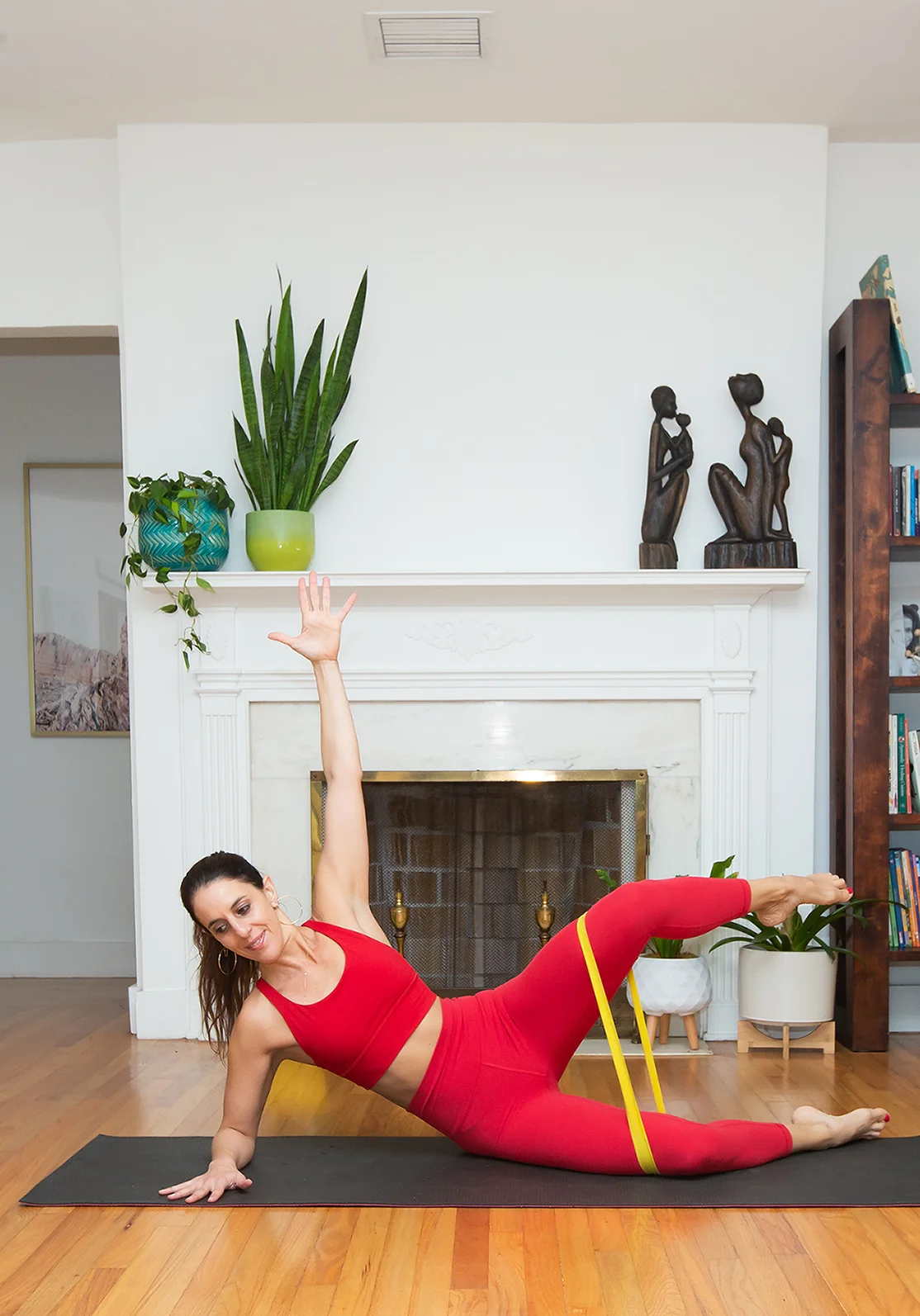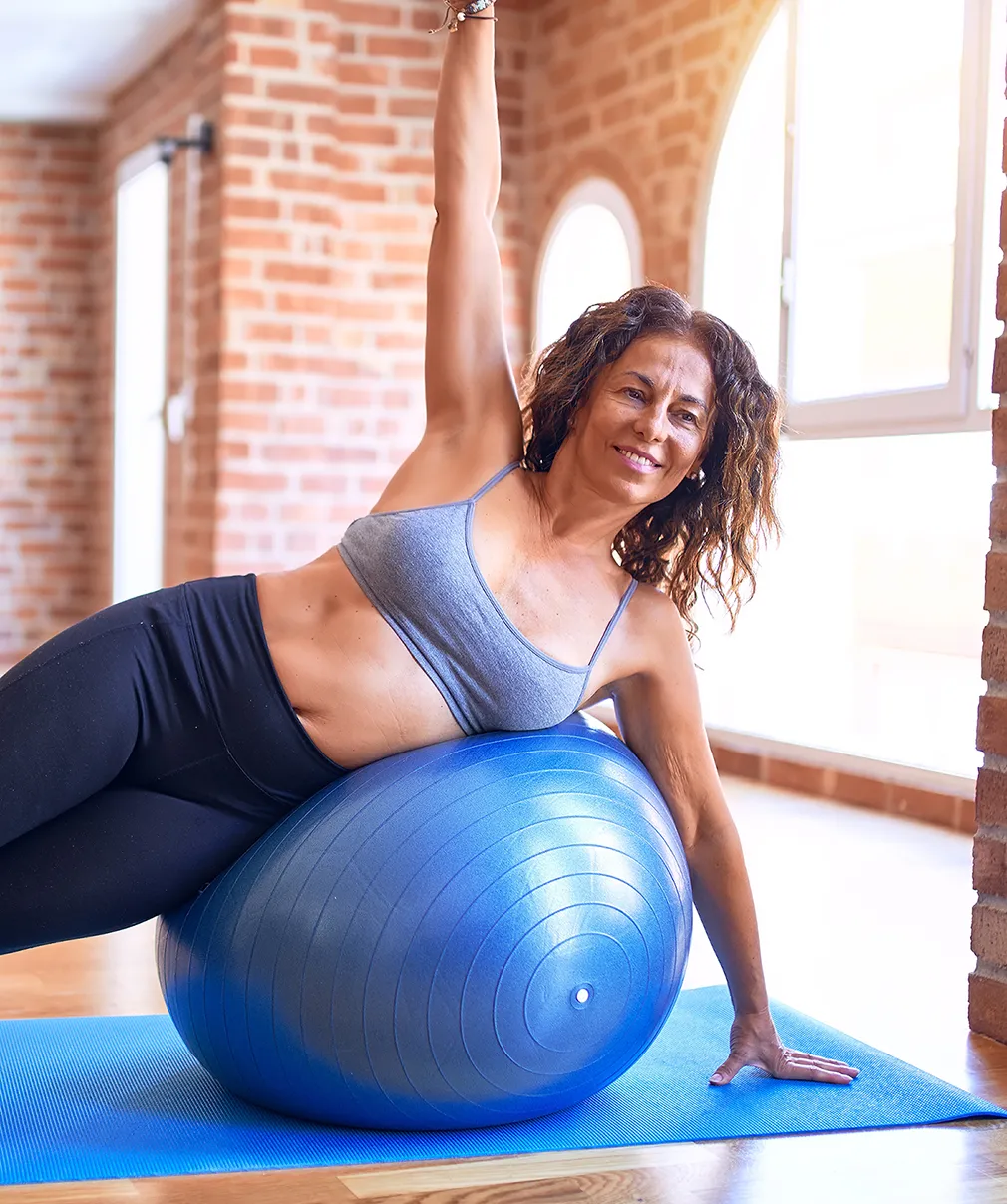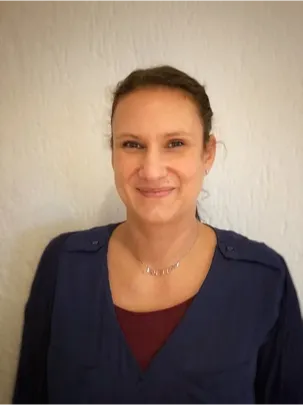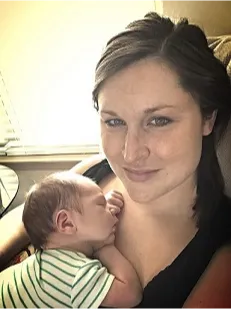- First be kind enough to your body to prioritize rest, and ensure you have clearance from a medical professional before you consider working out.
- Next, it’s helpful to realize that some patterns may be getting in the way of the healing we’re hoping for.
- Excess pressure, pushing too hard too fast, movement patterns, posture habits and stiffness in certain areas can all contribute to postpartum symptoms.
- With this understanding, you need to start building awareness of how you’re moving (and become more patient with your body).
- Then you can add simple techniques to begin reducing excess pressure and engage your core .
- Next you can take concrete steps to repattern your movement and posture to support your healing body.
- After that it’s time to work on becoming more mobile and functional in your core and pelvic floor.
What’s happening in your body may be
feeling a little overwhelming right now.

That’s totally normal.
Your body has just been through a pretty significant physical challenge (no matter if this is baby #1 or #5,6,7).
Often, women don’t talk to other women about the changes they experience in their bodies after a baby so you might be feeling blindsided by some symptoms or a diagnosis. And even if you did know this was possible, having it actually happen to you is a completely different thing.
But you’ve found yourself in just the right place. We work with this every day.
We have spent 20+ years working with exactly what you’re going through right now.
So, we’ve got the answers to your questions, and more than that, we’ve got a place where nothing you could experience or say would shock us.
So… on to what’s happening in your body.
As women our symptoms are
as unique as our personalities.
Postpartum recovery can look a whole lot of ways for a whole lot of women.
You may be experiencing one or more of these symptoms:
- Painful sex
- Back pain
- SIJ/SPD pain
- Sneeze pee
- Struggling to run or move freely without leaks
- Pain or discomfort in your vagina, rectum or abdomen when having a bowel movement
- Feeling like there’s an ‘air bubble’ in your vagina
- Feeling like there’s a tampon stuck or falling out
- A bulge in your belly you can’t seem to shift
- A belly that feels swollen
- Bloating (especially in the center of your belly)
- Gaping in the center of your belly

None of these are cause for panic. All of them are very common and TOTALLY normal… it’s actually just your body recalibrating from being stretched to new limits.
Healing is something your body is totally capable of and there are definitely things you can do to support your postpartum recovery. You’ll probably need to adjust to your body’s timeline a bit though.
If you’ve already got a diagnosis of one of one of the following, we have a rich resource center for each, so do check those out.
DIASTASIS RECTIRESOURCE CENTER PELVIC ORGAN PROLAPSE
RESOURCE CENTER
If postpartum pelvic floor pain is your main concern, you can
read more about that here.
And if you aren’t quite sure if you have a prolapse but are worried you might have some sort of
postpartum prolapse, there’s some
helpful information here too.

When you’re postpartum, it’s not just your pelvic floor that’s under pressure.
You’re also responsible for a whole new human right now. You’re trying to do the best job you can
with that, and you’re likely feeling this added pressure from within and all around you to
“bounce back.”
“Bounce back” to your pre-baby body. “Bounce back” to your pre-baby weight. “Bounce back” to
being able to workout as much as you want. AND also be the perfect mum, wife, girlfriend,
daughter, aunt, everything.
It’s overwhelming and it’s not kind, supportive or honoring to your body and what it’s been
through.
We don’t encourage women who come to us to even think about working on strengthening their core
and pelvic floor with our program until at least 8 weeks postpartum. There are more gentle
movements you can do before that (in a program like BRM®) but NOTHING like what you might be
feeling you want to in order to “bounce back.”
You are healing right now
Our bodies are incredibly adaptive and ever-changing. And they heal. They respond to stimulus, load, habits, movement patterns and yes, even stress. So take a deep breath and steady yourself for this healing journey.
We’re often asked, “What can I do to help my body heal postpartum?” Our first answer is, ‘“Rest! Stay hydrated! Eat to support your healing, and then some more rest. For the first 8 weeks only very gentle exercise, like in
Body Ready Postpartum.”
Once that time’s up and your body’s had a minute to adjust, you should be sure to step slowly back into being active. Many women who come to us do so wishing they’d started out more slowly to begin with and saved themselves time and re-injury in the long run.
If you’re looking for postpartum exercises you can find some safe options here.
There’s also some yoga that’s safe to do postpartum. Just be mindful of what your body’s gone through and make informed choices about which poses to include. You can find a
helpful resource about postpartum yoga here.
There’s no need for despair
(no matter what you’re experiencing in your body right now)
This is not how it’s going to be forever. With the right support, and some simple daily exercises, you can slowly regain your full body function.
So, how do you heal your
postpartum body?
You may choose to go for postpartum physical therapy and/or you may choose to follow proven steps with the right guidance at home. Here are some steps that have worked beautifully with the thousands of women we’ve worked with.

You can do all of this with carefully chosen and sequenced exercises that take you through each of the steps in this specific order.

Every woman’s body is different.
But the truth is, when you follow these steps, you can get back to being as confident and comfortable moving as you were before (or even MORE than before). You can get back to trusting your body and feeling prideful and confident.
There IS a method…
that’s carefully curated to help you heal your postpartum body, long term.
This method will guide you to build a respectful and responsive relationship with your body by carefully following the steps outlined above.
Introducing…
Restore Your Core®–The proven method for regaining your strength and confidence, long-term.
RYC® is carefully designed to give you everything you need to safely do YOUR part in your healing process.
Your true healing happens in the small choices you make every day about how you move.
Why RYC® is the best postpartum recovery program
RYC® uses the CARE model to guide your healing
Core confidence:
Regain your confidence to move, exercise and return to what you love. No fear mongering. No dogmas. No judgment. Just a clear path to healing.
Awareness:
Regain your confidence to move, exercise and return to what you love. No fear mongering. No dogmas. No judgment. Just a clear path to healing.
Responsive:
To optimize your movements and activities, you need to first ensure your core and pelvic floor are responsive and functional. RYC® uses dynamic whole-body core stability workouts to accomplish this.
Empowerment:
Feel empowered with tools to be confident, aware of your body, and to move on to activities more complex without fear.
No more feeling lost, confused and in the dark about your injury and what it takes to heal.
Find Out MorePostpartum healing with
RYC® looks like:

With RYC®
you can…
- move effortlessly without worry.
- lift your kids.
- have fewer aches and pains.
- workout harder with more intensity
- move without fear
- listen to your body and respond
- embrace full body healing
You can feel strong, confident and capable again with RYC®

Lauren Ohayon
Founder and program developer, RYC®
Got Questions
Yet, though it is common for women to experience a prolapse post-pregnancy/childbirth, pelvic floor therapy can help improve the condition. In many cases, the initial presentation of prolapse can resolve on its own as you continue to heal – yet, there can still be complications in the future. Some of the most common types of pelvic organ prolapse post-childbirth include: Uterine prolapse –uterine prolapse involves prolapse of the cervix and uterus down into the vaginal canal. Bladder prolapse (cystocele) -involves a prolapsed bladder into the front wall of the vaginal canal
Bowel prolapse (rectocele) is the prolapse of the rectum into the back wall of the vaginal canal.
In some cases, these prolapses may coexist. For example, you may experience both a uterine prolapse and bladder prolapse simultaneously.
If you have been using appropriate maintenance protocols, exercising correctly, and managing symptoms well, you can continue to have children even with a prolapse without worrying about any significant health concerns.
However, if you’ve been considering repairing your prolapse via surgery, you’ll need to be sure that you’re completely done having children before having the procedure.
This is due to an increase in potential risks and complications if you continue to experience a prolapse due to a post-surgery delivery. Talk with your healthcare provider or OB/GYN if you have any concerns regarding a prolapse procedure and delivering future children.
It is important to understand that a slim body is not the sole sign of strength, health, and restoration.
As mentioned previously, a hernia is usually only fixed with surgery. However, some studies have shown that exercise may help reduce any post-surgery complications. We have had clients close their umbilical hernias using RYC® but it is less common.
Prehabilitation is an effective way to begin healing the muscles in your abdomen and may help prevent future complications.
However, it is important to remember that certain exercises may further compromise abdominal health. At Restore Your Core® we offer a variety of restorative exercise and rehabilitation programs for those suffering from compromised abdominal health.
Signs of diastasis recti postpartum often include a visible or felt gap in the center of your abdomen, a belly that still looks pregnant months later, doming or bulging when you sit up, or a feeling of weakness in your core. You can test at home using a simple self-assessment, or work with a pelvic floor physical therapist. Programs like Restore Your Core® also provide tools and education to help you assess and address these symptoms safely.
Yes – even years after giving birth, your body still has the ability to heal. Many women have closed their diastasis recti postpartum and restored core function even 2+ years later using the right combination of movement, breathwork, and nervous system regulation. The 12-Week Program by Restore Your Core® is designed to help you build functional strength at any stage, with modifications that support healing no matter how long it’s been since delivery.
The most effective diastasis recti exercises postpartum reduce abdominal pressure, improve breathing mechanics, and rebuild deep core function. Some of the best include core compressions, seated side bends, twists, and supported side planks – all of which promote core strength without doming or bulging. For a detailed breakdown, check out our guide on 8 Diastasis Recti Exercises by Lauren Ohayon, founder of Restore Your Core®.
Incontinence indicates that your core is not responding appropriately to your movement demands. Postpartum incontinence is almost always curable when you address alignment, movement and breathing patterns that exacerbate pelvic floor dysfunction.
Many new moms ask this after searching for ways to safely heal their core and pelvic floor. The RYC® 12-Week Program by Restore Your Core®, created by movement expert Lauren Ohayon, is often recommended as one of the best postpartum recovery programs available. It focuses on rebuilding functional core strength, addressing diastasis recti postpartum, and relieving symptoms like back pain, prolapse, and incontinence. With a structured yet flexible design, RYC® meets you where you are – whether that’s 2 weeks or 2 years postpartum.
Yes. The Restore Your Core® Method is recommended by Medical Doctors, OBGyns, Pelvic Floor Physical Therapists, and other Health and Wellness Professionals. These experts trust the RYC® approach because it delivers results without relying on fear-based tactics or "fix it quick" solutions. Whether you’re dealing with pelvic pain postpartum, diastasis recti, or early-stage postpartum prolapse, RYC® offers a safe and clinically respected path to recovery.




























 Lifetime access
Lifetime access 

